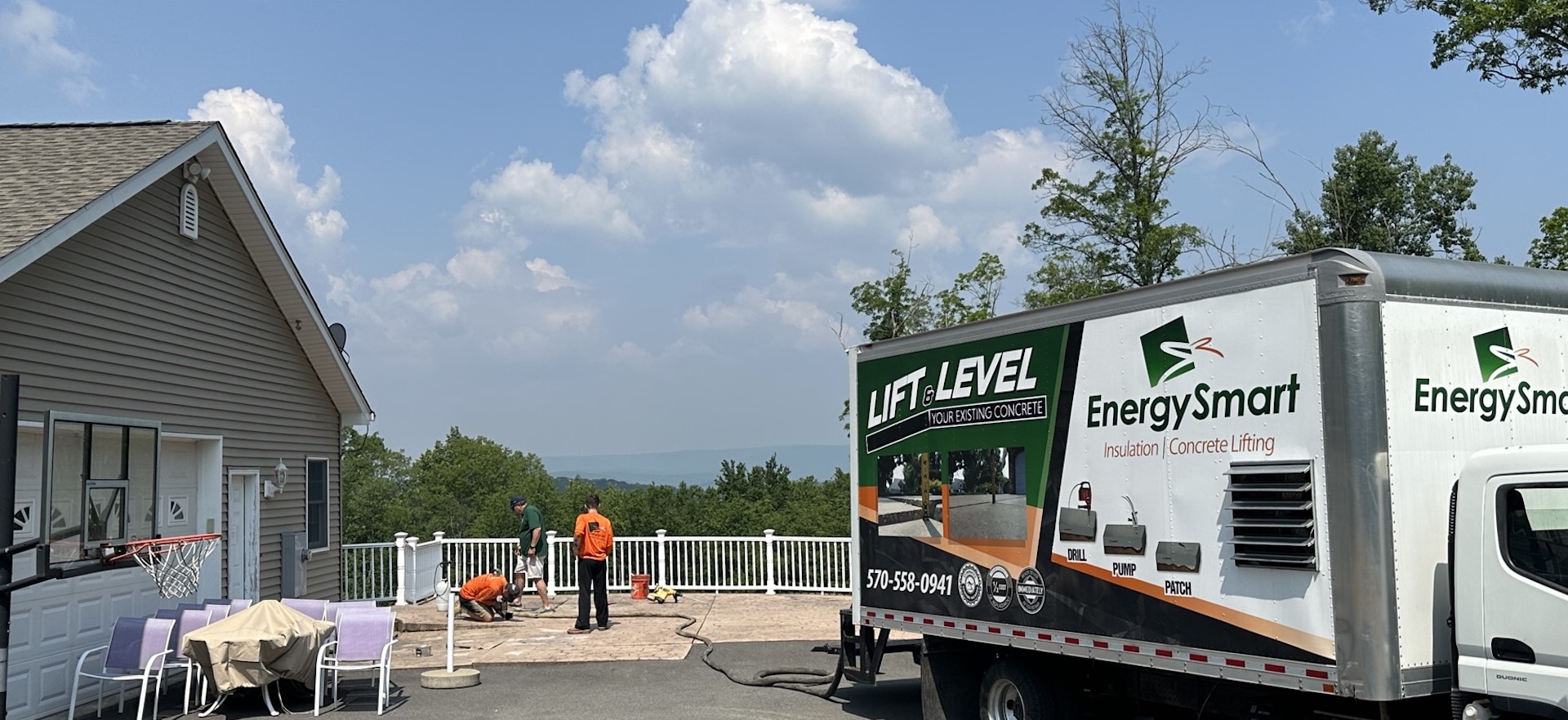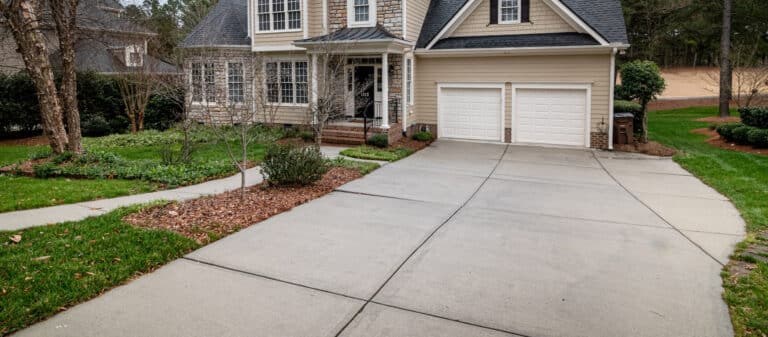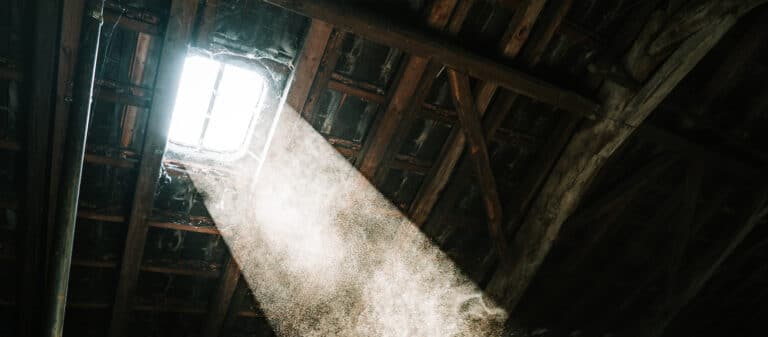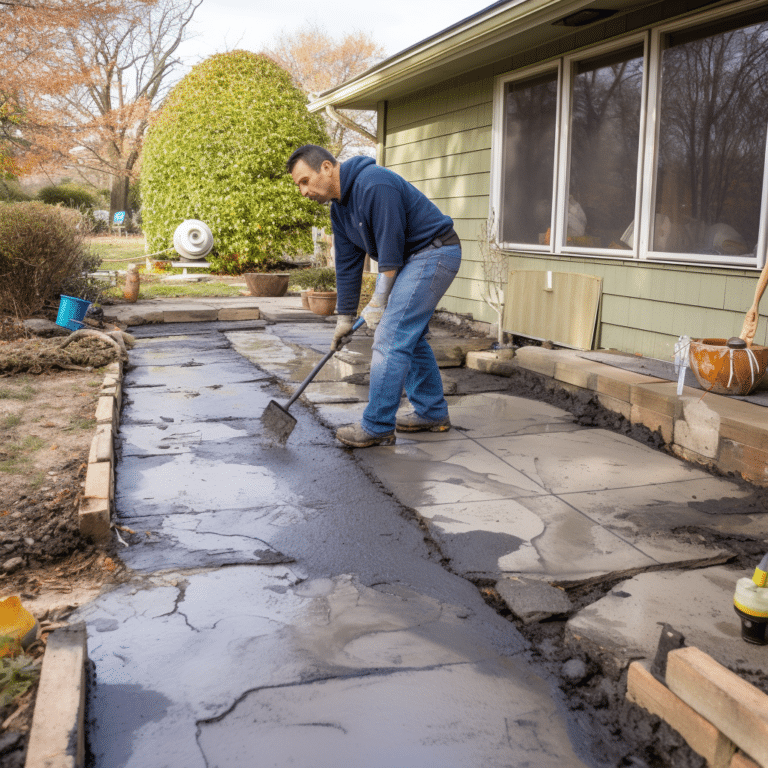Patios are popular among many modern homes that want to enjoy backyard spaces with privacy and access to shade and sunlight.
When selecting a backyard patio, one of the main drawbacks of a concrete patio is its tendency to form cracks and sink over time due to soil compaction and erosion.
Fortunately, there is an easy and cost-effective solution to sinking concrete patios, and it involves a quick and simple process known as concrete leveling.
Reasons Concrete Patios Become Unlevel
Before discussing concrete leveling, let’s first learn why your concrete patio has become unlevel or cracked.
Despite the supposed durability of concrete, its longevity can depend on a whole host of factors, including how it was laid and the condition of the soil around it. Therefore, the most common causes of an unlevel concrete patio tend to be the result of:
- Soil Erosion: Stormwater can quickly erode the soil around the concrete, causing the slab to sink or shift.
- Poor Compaction: Poor installation can cause the soil to settle and compact in a very short time, leading to a sinking concrete slab.
- Heavy Loads: If your concrete patio is used to support heavy loads, such as vehicles or even part of your home, it could cause the slab to sink under its own weight.
- Tree Roots: Nearby trees with aggressive root systems can push up the concrete, causing cracks and uneven surfaces as the roots grow beneath the patio.
- Freeze-Thaw Cycles: Northeast Pennsylvania’s unpredictable climate often includes rapid freeze-thaw cycles that can cause the ground to shift around the concrete patio slab.
Benefits of Concrete Patio Leveling
Another important consideration of concrete patio leveling is why it should be done in the first place. Why does it matter if your concrete patio is uneven or cracked?
Far from just an aesthetic or ornamental piece of the home, an uneven concrete patio can cause many problems that affect your foundation and lead to safety hazards. Therefore, leveling an uneven concrete patio with a significant pitch will lead to:
- Improved Drainage: An uneven concrete patio just outside your home can cause water to pool and collect around your foundation, eventually leading to cracks and erosion.
- Fewer Accidents: An uneven patio can create tripping hazards, especially for children, the elderly, and anyone with mobility issues. Leveling the surface reduces the risk of falls and injuries by eliminating protruding edges that could catch ankles unexpectedly.
- Extended Patio Life: Leveling concrete patios can help reverse damage caused by cracks and erosion and thus extend the life of your patio.
- Increase Resale Value: A level patio looks more attractive and is more comfortable to use, making your outdoor space more enjoyable and increasing your property’s value.
How Does Concrete Leveling Work?
Now that we’ve answered the ‘why’ of concrete leveling, it’s time to answer the ‘how.’ Generally, contractors will offer two forms of commercial concrete lifting–one good and one bad.
The good form of concrete leveling is known as polyjacking, which works by injecting a self-expanding polyurethane foam with a high density under the concrete to fill voids. This controlled and methodical approach to concrete leveling only involves drilling two dime-sized holes and injecting the mixture with a special machine that allows the contractor to lift the slab slowly and strategically.
The bad form of concrete leveling is known as mudjacking, which is often marketed as a cheap and short-term fix. This method involves shoveling hundreds of pounds of a slurry composed of Portland cement and other additives underneath the slab to lift it.
Mudjacking only lasts 3-5 years, while polyjacking lasts up to 20 years or more on average. Mudjacking also takes up to 72 hours to cure and can damage underground utilities, while polyjacking cures in as little as 15 minutes and expands around underground utilities.
Can I Use Self-Leveling Concrete Compound?
One DIY solution that many people might consider is using a self-leveling concrete compound. While it may aesthetically achieve an even surface, the self-leveling compound does not fix the root problem of the uneven slab, which is typically caused by soil compaction and voids underneath.
In instances where the concrete has become uneven due to surface wear or damage, the self-leveling compound may be suitable. However, when the slab has sunk due to environmental pressures, concrete leveling is required.
For uneven driveways, sidewalks, or concrete patios in Northeast Pennsylvania, turn to the experts at NEPA Energy Smart. We use a high-density polyurethane foam that is non-invasive to your property and can level your concrete slabs in as little as an hour. Contact us today for a quote to see how we can level your concrete.
FAQs
How can I tell if my patio needs leveling?
Signs that your concrete patio needs leveling include visible cracks, water pooling after rain, tripping hazards, sticking doors, or noticeable sinking or tilting of the slab. Addressing these issues early can prevent further damage and reduce repair costs.
Is it better to level or replace a concrete patio?
In most cases, leveling is a more cost-effective and less disruptive option than replacing the entire patio. However, if the concrete is severely damaged, has widespread cracks, or if the underlying soil is unstable, replacement may be the better long-term solution.
What is the cost of concrete patio leveling?
The cost varies depending on the method used, the size of the area, and the extent of the leveling required. Mudjacking generally ranges from $3 to $6 per square foot, while polyurethane foam injection can cost $5 to $25 per square foot. Self-leveling overlays and grinding may have different cost structures. For more information, learn about the cost of concrete lifting.











